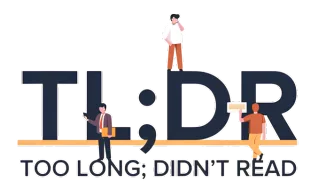A quiet revolution often begins with a sudden jolt. For Circle, the stablecoin issuer, that jolt arrived with its public offering. Just two weeks after going public, the company’s stock, trading under the ticker CRCL, has seen a remarkable surge. It’s the kind of performance that makes you sit up and take notice, even in the fast-paced world of digital assets.
- Circle’s stock price has surged significantly since its public offering, signaling strong investor confidence. This growth is happening in response to regulatory tailwinds and broader market trends.
- The GENIUS Act, which aims to create a clear regulatory framework for stablecoins, has played a key role in boosting investor enthusiasm. This clarity is seen as a positive for the entire digital asset industry.
- Stablecoins are attracting increased interest from major U.S. banks and big tech firms, signaling a maturation of the market and a shift toward mainstream adoption. Companies like Apple, Airbnb, and Google are exploring stablecoin adoption.
On a recent Wednesday, CRCL closed its trading day at $199.59. That marked a significant jump, a 33.8% increase from its opening price of $153.22, according to data from The Block. The trading volume was equally impressive, hitting a record 63.5 million shares changing hands, as Yahoo Finance reported. And the momentum didn’t stop there. The stock climbed another 6% in Wednesday’s after-hours session.
The Ascent of Circle’s Stock
If you look at the bigger picture, the numbers become even more striking. Circle’s stock price has risen about 530% from its initial public offering price of $31 on June 5. Think about that for a moment. A company’s value more than quintupling in just a couple of weeks. It’s not something you see every day, and it certainly signals a shift in how the market views stablecoin issuers.
This kind of rapid appreciation often points to more than just good company performance. It suggests a broader change in sentiment. Investors are clearly placing a new level of trust in the underlying technology and the regulatory landscape that supports it. It’s a vote of confidence, plain and simple, for a sector that has seen its share of ups and downs.
What exactly sparked this sudden burst of investor enthusiasm? As with many things in the crypto space, the answer often involves a mix of market dynamics and legislative action. In this case, a key piece of legislation appears to have played a significant role, providing a much-needed boost to the entire stablecoin ecosystem.
The Regulatory Tailwinds
The timing of Circle’s stock surge aligns closely with a major legislative development. The Guiding and Establishing National Innovation for U.S. Stablecoins Act, known as the GENIUS Act, passed the Senate on Tuesday. This bill aims to create a clear regulatory framework for stablecoins in the United States. For an industry that has often operated in a gray area, such clarity is like a breath of fresh air.
The passage of the GENIUS Act in the Senate is a big step. It now moves on to the House of Representatives. President Trump has been vocal about his support for the bill, urging the House to pass it quickly. He even added, “get it to my desk, ASAP,” underscoring the urgency he sees in establishing a stablecoin framework.
This legislative progress isn’t just good news for Circle. The GENIUS Act vote also led to a spike in Coinbase’s stock, which rose 16% on Wednesday. This broader market reaction suggests that investors see regulatory clarity as a positive for the entire digital asset industry, not just individual players. It provides a foundation for growth and reduces uncertainty, which markets generally dislike.
When governments start to define the rules of the road, it often brings in more traditional investors. They like predictability. They like knowing where they stand. The GENIUS Act, if it becomes law, could pave the way for even wider adoption of stablecoins, making them a more integrated part of the financial system. This is a significant moment, one that could reshape the future of digital money.
Stablecoins Step Into the Spotlight
Circle’s strong performance reflects a renewed investor confidence in stablecoins. This year, stablecoins have attracted increased interest from major U.S. banks and big tech firms. You see companies like Apple, Airbnb, and Google exploring stablecoin adoption. This growing interest from established financial and technology giants signals a maturation of the market.
The success of Circle might also signal a favorable market for other crypto firms considering going public. Companies like digital asset exchange Gemini and Kraken are reportedly considering IPOs in 2025. If Circle’s trajectory continues, it could set a positive precedent for these other players, making the path to public markets a bit smoother.
Circle is the issuer of USDC, which is the second-largest USD-pegged stablecoin. It sits just behind Tether’s USDT. USDC is also the seventh-largest cryptocurrency by market capitalization, currently standing at $61.4 billion. It holds a significant position in the digital currency landscape, acting as a bridge between traditional finance and the crypto world.
The Block’s Data Dashboard shows that USDC comprises 25% of the total stablecoin supply. As of June 19, the total stablecoin supply stood at $243 billion. This means a quarter of all stablecoins are USDC. That’s a substantial share, highlighting its importance and widespread use within the ecosystem.
USDC’s use cases have been expanding rapidly across the cryptocurrency industry. The XRP Ledger, a Layer 1 blockchain connected to Ripple, recently adopted USDC. This move broadens USDC’s reach and utility. Coinbase Derivatives is also laying a roadmap to enable USDC as collateral for U.S. futures trading by 2026. These developments show a growing integration of USDC into various parts of the crypto economy.
As USDC usage rises, broader interest in the stablecoin industry has soared this year. Even retail giants like Walmart and Amazon are considering launching their own stablecoins. This suggests that stablecoins are moving beyond the crypto niche and into mainstream commerce. It’s a sign that these digital dollars are becoming a more accepted form of payment and value transfer.
Consider this: USD1, a stablecoin issued by the Trump-linked DeFi project World Liberty Financial, was used to close a record $2 billion investment. This investment came from the Abu Dhabi investment firm MGX into the crypto exchange Binance, as The Block previously reported. This real-world application in a major financial deal underscores the growing utility and acceptance of stablecoins in large-scale transactions.
The journey for Circle and the stablecoin market continues. The House of Representatives now holds the next key vote on the GENIUS Act. What happens there will certainly shape the path forward. But one thing seems clear: stablecoins are no longer just a curiosity. They are becoming a foundational element of the evolving digital financial system, and the market is taking notice.

















